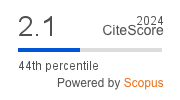Variation of Production Line Energy Consumption: Stochastic Process Models for Single and Multiple Machine Systems
DOI:
https://doi.org/10.4108/eetiot.8011Keywords:
Energy consumption, non-energy-related, production indicatorsAbstract
The energy consumption of production lines can vary across different machines due to diverse factors such as varying processing rates, machine conditions, product characteristics, and the compatibility between products and machines. Additionally, identical products on the same type of machine may experience temporal variations in energy consumption due to real-time equipment status and operational activities. Accurately understanding these influencing factors can aid in developing more efficient energy management strategies.
This study first analyzes the energy consumption of single machines processing single products, establishing a probabilistic model for the stochastic process of single-machine energy consumption over time. Mathematical tools, including convolution, are then employed to develop a stochastic process model for energy consumption across multiple machines and products within the entire plant. The overall stochastic process model is optimized, leading to the creation of a "Peak Energy Consumption Alert" and an "Energy Efficiency Alert" system to mitigate the risks of peak energy consumption and overall energy inefficiency.
By utilizing the proposed optimization model for machine component energy consumption and the production scheduling module, the likelihood of exceeding contracted power capacity is significantly reduced. This approach also enhances the energy efficiency of production scheduling, thereby reducing the total energy consumption of the entire plant. Furthermore, while meeting energy planning goals, the model considers non-energy-related production indicators (e.g., completion time, order delivery dates), ultimately improving the operational efficiency of production lines.
Downloads
References
[1] Lin CC, Deng DJ, Chih YL, Chiu HT. Smart manufactur-ing scheduling with edge computing using multiclass deep Q network. IEEE Trans Ind Inform. 2019;15(7):4276-4284.
[2] Bougain S, Gerhard D, Nigischer C, Ugurlu S. Towards energy management in production planning software based on energy consumption as a planning resource. Procedia CIRP. 2015;26:139-144.
[3] Filimonova AA, Kazarinov LS, Barbasova TA. Dispatch-ing control of industrial facility power consumption. En-ergy Procedia. 2015;83:111-120.
[4] Soares LJ, Medeiros MC. Modeling and forecasting short-term electricity load: A comparison of methods with an application to Brazilian data. Int J Forecast. 2008;24(4):630-644.
[5] Al-Hamadi HM, Soliman SA. Short-term electric load forecasting based on Kalman filtering algorithm with moving window weather and load model. Electr Power Syst Res. 2004;68(1):47-59.
[6] Amjady N. Short-term hourly load forecasting using time-series modeling with peak load estimation capabil-ity. IEEE Trans Power Syst. 2001;16(4):798-805.
[7] Sigauke C, Chikobvu D. Prediction of daily peak elec-tricity demand in South Africa using volatility forecast-ing models. Energy Econ. 2011;33(5):882-888.
[8] Deng DJ, Chang RS. A priority scheme for IEEE 802.11 DCF access method. IEICE Trans Commun. 1999;E82-B(1):96-102.
[9] Tristo G, Bissacco G, Lebar A, Valentinčič J. Real-time power consumption monitoring for energy efficiency analysis in micro EDM milling. Int J Adv Manuf Tech-nol. 2015;78(9-12):1511-1521.
[10] Shie MC, Lin PC, Su TM, Chen P, Hutahaean A. Intelli-gent energy monitoring system based on ZigBee-equipped smart sockets. In: Proceedings of the 2014 In-ternational Conference on Intelligent Green Building and Smart Grid; April 23-25, 2014; Taipei, Taiwan. IEEE, 2014. p. 1-5.
[11] Lee GB, Ko MJ, Ku TJ. Analysis of energy efficiency in PCB manufacturing process. Int J Precis Eng Manuf. 2012;13(7):1215-1220.
[12] Singh A, Saini S, Sharma S, Trivedi P. Demo abstract: Energy optimization in commercial buildings: From mon-itoring to savings realization. In: e-Energy '15. Proceed-ings of the 2015 ACM 6th International Conference on Future Energy Systems; July 14-17, 2015; Bangalore In-dia. United States: Association for Computing Machin-ery; 2015. p. 197-198.
Downloads
Published
Issue
Section
License
Copyright (c) 2025 Po-Jung Lai, Hao-Chu Lin, Hui Hsin Chin

This work is licensed under a Creative Commons Attribution-NonCommercial-ShareAlike 4.0 International License.
This is an open-access article distributed under the terms of the Creative Commons Attribution CC BY 4.0 license, which permits unlimited use, distribution, and reproduction in any medium so long as the original work is properly cited.




